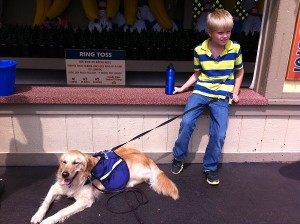Temple Grandin, you may or may not know, is a person. I had not heard of her until recently, but I suspect her name is going to become much more recognized. Time Magazine named her one of their Time 100 for 2010. Sure that was awhile ago but consider this- she made the list of the hundred most influential people in the WORLD. She has a website. I highly suggest you check it out.

Temple Grandin (2010), the film, is the authorized movie biography of this remarkable woman and one of the first movies that treated autism with respect. She was diagnosed with autism in 1950, when the disorder was still called infantile schizophrenia. Her mother was told that Temple’s options for any measure of achievement or satisfying relationship in life were nil. Institutionalization was offered as the only practical option. But her mother wouldn’t give up. Claire Danes utterly transforms herself to tell us the story of Temple’s emergence from a relatively isolated kind of consciousness into the person she is today: author, lecturer, PHD, world renowned animal expert and autism advocate.
One of the first things we learn about Grandin is that she thinks in pictures, which makes film an especially potent medium for telling her story. Director Mick Jackson uses images throughout the film to help us understand how Grandin sees and feels the world. This is in keeping with what some have called Grandin’s greatest contribution to science- she was the first autistic person able to articulate to a wide audience what it is like to be autistic. Jackson’s film will widen the influence of her legacy further still. As well as a great story, it is a moving work of art.
I’m not sure if the brilliance of Claire Danes’ performance can be overstated, but I will simply say this: I had no idea. This woman is an ACTRESS!! HBO films are not considered for Oscars, but if they did she would certainly be a strong nominee. For the Silo, Junior Selector.







